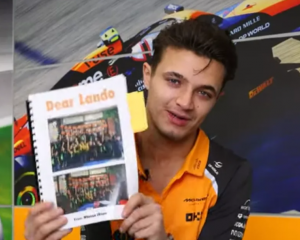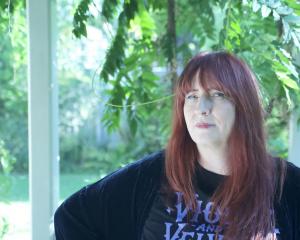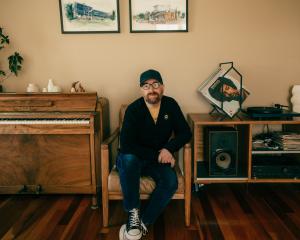
The four Pevensie children, Peter, Susan, Edmund and Lucy, will reappear on the big screen again next month in the second instalment of C S Lewis's Chronicles of Narnia series.
New Zealand director Andrew Adamson was responsible for bringing to the silver screen the first two chronicles, The Lion, the Witch and the Wardrobe and Prince Caspian.
For each fantasy movie an entire world needed to be created with a history, landscape, creatures big and small, weapons and clothing.
And who else could be called to undertake such a mammoth task than the staff at special effects company Weta Workshop.
The company shot to fame after winning Oscar awards for their work on Peter Jackson's Lord of the Rings trilogy.
Weta Workshop designers Daniel Falconer and Paul Tobin told NZPA they had to work hard to ensure both mystical worlds maintained their own identities.
"People are always going to draw comparisons - but there was a strong feeling that we needed to stay clear of Lord of the Rings," Tobin said.
"One of the things that definitely helped do that was that a large chunk of designers on the film weren't actually on Rings at all.
"And I think also the sheer variety of creatures in Narnia... Rings has a number of creatures, but comparing it to the sheer volume of creatures in Narnia, it didn't come up as so much of an issue."
Falconer said the Narnia creatures were drawn from classical mythology lore, while the creatures in the Rings' movies were inspired by northern European and Scandanavian mythology.
"So fortunately the source material pushed it in different directions."
Fans of the Narnia films can now take a close up look at Weta's work in a new book, The Crafting of Narnia, that the two men have produced - Falconer the author and Tobin the artistic director.
The hardback has packed 300 pages with photos and drawings of weapons, creatures and landscapes used in the Narnia films. It is due to be officially released on June 11 by Weta head Richard Taylor - the same day as the Prince Caspian movie release date.
Typically detailed focused, the Weta team crafted weapons with minute decorations.
Tobin said the detail in the props would never be seen by movie-goers and could only be appreciated by those looking at close-up pictures in the book.
He said the team did it because it was "something that we enjoy doing, because what it does is it sparks ideas, because you need a starting point, a research idea area to spark the visual pursuit".
In his books, Lewis did not describe the Narnia world or characters in great depth, which gave the designers leave to come up with their own interpretations.
"Peter's shield was described as a silver shield with a rampant lion the colour of a red strawberry and I think that was it, and that's what I had to go for, but we used that and that's ultimately what you got, but we built upon that with a lot of symbolism," Tobin said.
The designers based the props of the four children on the pre-Raphalite period.
"In the Victorian times, when Lewis was growing up there was quite an interest in the medieval period and the arts and crafts of that period as well.
"So it was like a reinvention of that period and that was one of the first places we started looking for artistic inspiration," Tobin said.
They saturated the props with symbolism, he said.
"So a piece of pattern work on a shield and a bit of engraving is not just arbitrary, it's not just to look good, but there's a story behind it.
"So we would pore through all seven books - all of the Narnia books - trying to feed back into the culture."
Lucy's bottle of healing solution was decorated with the Yarrow flower, which was traditionally used for its healing properties and Peter's armour included images of oak leaves.
"He was a king, it's a symbol of courage, strength and it's a symbol of kingship in England.
"It's the kind of level of detail which you'd never pick up in a film," Tobin said.
Both designers hoped the book would inspire young artists to follow their dreams and not be cramped by only painting fine arts.
"It gives them something for them to think about and say `Hey drawing monsters in the back of my maths book can actually lead to a job sometimes'," Falconer said.
"And this tells you Kiwis can do this stuff - it's not just this magical stuff that happens oversees in Hollywood. It's accessible and you can do it.
"Here's a whole facility full of a couple of hundred people who are passionate about what they do and follow their dreams and are doing amazing stuff.
"So that was part of the mandate for doing the book was let's celebrate the amazing work that some of the guys in the workshop have done."
The men said they hoped to see more books produced from future movies Weta is involved with.
Tobin said in any film there were " unsung heroes" because the amount of people who worked on the production.
"There's lots of little cogs and I suppose this is a really nice opportunity, a chance for everyone who did work on the film to get something public domain, which is a really good thing.
"And it's a really nice way to document the work that's been done on the film.
"The thing is, you see the film, it's an hour and a half or a two hour experience. But for us it's two and a half years ," he said.












